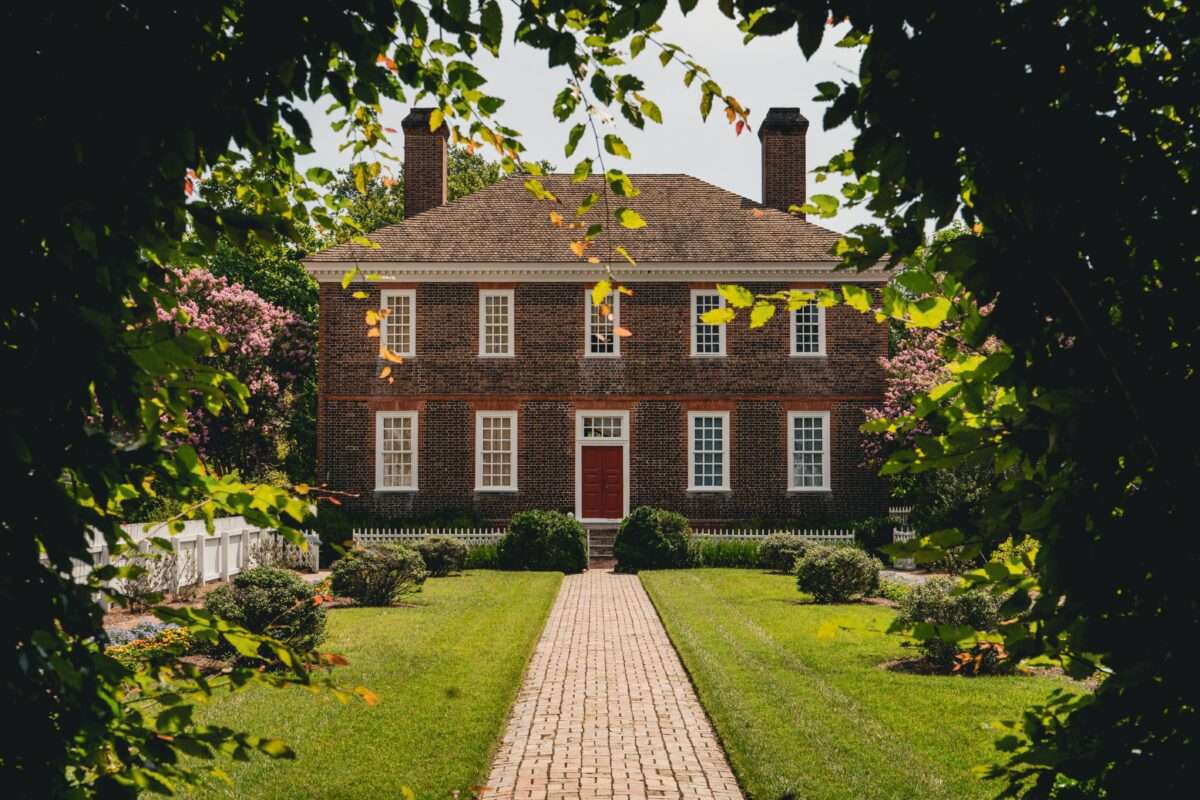The Art of Home: An Exploration of Popular Residential Architectural Styles
Saturday, March 9, 2024
Welcome, homeowners, to a journey through the world of residential architecture. Whether you have recently purchased your dream home or are still in the process of finding the perfect one, understanding different architectural styles can help you appreciate and enhance your living space.
From modern minimalism to charming Victorian homes, each style has its own unique features that reflect the time period and culture in which it originated. Join us as we delve into the rich, personal history and alluring aesthetics of some of the most popular residential architectural styles seen around the globe. Get ready to be inspired and discover new ways to add character and charm to your humble abode.
After all, there’s no place like home.

Introducing Different Architectural Styles - Understanding the Basics
If you’re looking to build or redesign your home, understanding the basics of residential architectural styles is a great place to start. From traditional Colonial to sleek Modern, each style has its own unique characteristics and history.
It’s important to work with an experienced architectural drafting and design team to ensure that your vision is brought to life in the most accurate and functional way possible. While there are many factors to consider, from materials to layout, it’s exciting to explore the world of architectural styles and discover which one best suits your personal taste and lifestyle needs.
Colonial Architecture - History, Influences and Characteristics
When we think of colonial architecture, we’re transported back to a time when homes were built to last. This residential architectural style isn’t only about function, but rather the blend of form and function. The characteristics of colonial architecture encompass a wide range of influences.
Colonial architecture is distinguished by its symmetry, with a centrally located front door flanked by evenly spaced windows. These homes are typically two to three stories high, often with steep roofs and chimneys. The interiors generally follow a simple, rectangular floor plan, with rooms branching out from a central hallway.

In terms of materials, brick and wood are commonly used, reflecting the resources that were readily available during the time period. The style is also noted for its minimal ornamentation, focusing more on functionality and durability.
From Georgian to Federal to Spanish colonial, each style has its own unique flair. It’s fascinating to see how architectural drafting and design played a crucial role in shaping the structures we know and love today. Whether it’s the symmetrical facades or the classic columns, colonial architecture has left an indelible mark on American history.
Victorian Architecture - Popularity and Unique Elements
When it comes to residential architectural styles, Victorian architecture continues to remain a popular choice among homeowners. Characterized by steep roofs, intricate details, and ornate embellishments, Victorian architecture is striking in its appearance. But it’s not just the aesthetics that make this style of architecture so appealing.
Victorian architecture also incorporates unique elements like turrets, towers, and bay windows, adding a sense of playfulness and whimsy. Of course, to achieve these unique elements, architectural drafting and design played a critical role in the creation of Victorian homes. As a result, they require careful planning and attention to detail. Yet, the end result is worth it as Victorian architecture offers homeowners a chance to live in incredibly beautiful and unique living spaces.
Tudor Style - Ancient Roots and Modern Appeal
The Tudor style is one of the most well-known residential architectural styles, known for its ancient roots and modern appeal. With its distinctive features like half-timbering, steeply pitched roofs, and ornate brickwork, Tudor homes always catch the eye.
Originating in England during the 16th century, this style has evolved over time, incorporating modern design elements while maintaining its classic charm.
Tudor style is recognized worldwide for its unique and historic design elements. Here are some of the key characteristics that define Tudor architecture:
- Half-Timbering: This involves framing the house with wood and filling in the gaps with bricks or plaster. It’s one of the most iconic features of Tudor homes.
- Steeply Pitched Roofs: Another distinguishing feature is the steep, multi-gabled roof often covered in clay or slate.
- Prominent Chimneys: Tudor homes typically have one or more tall, ornate chimneys which are often topped with decorative chimney pots.
- Diamond-shaped Window Panes: Windows are usually tall and narrow with a diamond pattern, often in a casement style.
- Ornate Brickwork: Tudor homes often feature decorative brickwork or stonework, adding to the overall aesthetic appeal.
- Distinctive Doorways: Tudor homes are known for their arched, board and batten doors, often with elaborate hardware.
Thanks to the popularity of home renovation shows and a renewed interest in architectural drafting and design, Tudor homes are more popular than ever. With their unique character and timeless appeal, they are sure to remain a staple of residential architecture for years to come.
Craftsman Style - Durability meets Beauty
Craftsman style is one of the most popular residential architectural styles in the United States. Known for its handcrafted details and warm, inviting aesthetic, this style has been influencing architectural drafting and design for over a century. What makes the Craftsman style so special is its combination of durability and beauty.
The attention to detail and quality craftsmanship that go into every element of a Craftsman home make them not only beautiful but also durable enough to stand the test of time. From the exposed rafters to the built-in cabinetry, every feature of a Craftsman home is designed to be functional and beautiful. If you’re looking for a home that’s both stylish and practical, you can’t go wrong with Craftsman style.
Mid-Century Modern Architecture - From Retro to Relevant
Mid-Century Modern architecture has gained renewed recognition in recent years. Known for its clean lines, geometric shapes, and integration with nature, this residential architectural style emerged in the mid-20th century and is now making a comeback. With its focus on simplicity and functionality, Mid-Century Modern design epitomizes the idea that less is more.
Here are just a few characteristics of Mid-Century Modern Architecture:
- Simplicity and Functionality: The beauty of mid-century modern architecture lies in its simplicity. This style prioritizes function over form, resulting in an aesthetic that is minimalist yet comfortable.
- Integration with Nature: Mid-century modern homes are designed to blend seamlessly with their surroundings. They often feature large windows and open floor plans that bring the outdoors in, ideal for nature lovers.
- Timeless Appeal: Despite originating in the mid-20th century, this style has endured and is now more popular than ever. Its timeless appeal ensures that your home will never go out of style.
- Flexible Interiors: The open floor plans common in mid-century modern homes provide great flexibility. You can easily adapt the space according to your needs and lifestyle.
- Quality Craftsmanship: Mid-century modern architecture places a high emphasis on craftsmanship. These homes are built to last, offering both visual appeal and durability.
- Easy Maintenance: The simplicity of mid-century modern design also makes these homes easier to maintain. There are no excessive details or ornate embellishments to worry about.
It’s no wonder that top architects and designers continue to draw inspiration from this classic style when creating contemporary homes. This timeless style has proven to be just as relevant today as it was when it first emerged.
Contemporary Styles in Home Design- Finding Your Personal Expression
Designing your home is one of the most personal and creative experiences you can have. There are countless residential architectural styles and architects that specialize in architectural drafting and design. Contemporary styles in home design offer a unique opportunity to create a living space that not only fits your current lifestyle but also expresses your individuality.
As you venture into integrating your personal expression into your home design, here are a few practical tips:
- Reflect on Your Lifestyle: Your home should be a reflection of how you live your life. Consider your hobbies, your comfort preferences, your work habits, and the people you share your home with. If you love reading, create a cozy reading nook; if you frequently host dinner parties, design an open-plan dining area.
- Showcase Your Passions: Use your home to showcase your passions. If you’re an art enthusiast, make space for an art exhibition wall; if you love nature, incorporate natural elements and plants into your design.
- Choose Your Colors Wisely: Your choice of color can greatly affect the feel of your home. Choose a palette that speaks to your personality. Bright, bold colors can create an energetic ambiance, whereas calm, neutral tones can create a relaxed atmosphere.
- Mix and Match: Don’t be afraid to mix different furniture styles, textures, and patterns. This can give your home a unique and personal touch.
- Include Personal Memorabilia: Displaying personal items like family photos, travel souvenirs or hand-me-down furnishings can add a unique and personal touch to your home, making it truly feel like yours.
- Don’t Rush: The process of integrating your personal expression doesn’t have to be immediate. Take your time, your style will evolve as you do.
Embrace your creativity and experiment with different materials, colors, and textures to create a custom home that you can be proud of. Whether you prefer sleek and modern or rustic and bohemian, there’s a contemporary home design out there that will allow you to find your personal expression.
Benefits of Knowing Your Home's Architectural Style - Aesthetic Enhancers & Increased Home Value
Knowing your home’s architectural style carries several benefits that extend beyond simply adding aesthetic value. Here are a few key advantages:
- Enhanced Curb Appeal: Identifying your home’s architectural style enables you to make informed decisions about exterior enhancements, such as paint colors, landscaping, and hardscaping, which can significantly boost curb appeal.
- Informed Renovations: When planning renovations, knowing your home’s architectural style can guide you in maintaining architectural integrity. This ensures that the changes will blend seamlessly with your home’s existing features, preserving its original charm and character.
- Increased Home Value: Homes that retain their original architectural style often have a higher market value. Prospective buyers appreciate homes that offer a unique charm and authenticity, which is often linked to a specific architectural style.
- Historical Appreciation: Understanding your home’s architectural style can provide insights into its history, which can add to your appreciation of your living space and the story it tells.
- Personal Satisfaction: Finally, taking the time to understand your home’s architectural style can enhance your personal satisfaction and pride in home ownership. Knowing that each detail in your home is a carefully considered part of a larger architectural tradition adds a layer of richness to your everyday living experience.
- Aesthetic Coherence: Recognizing your home’s architectural style can assist you in selecting interior and exterior enhancements that align visually and aesthetically with the fundamental design principles of the architectural style. Instead of a disjointed appearance, your home will exhibit a harmonious aesthetic, where every element, from the color scheme to the type of furnishings, contributes to a unified, visually pleasing whole.
At Keiser Design Group, we know how important your home is to you. Our team of experienced architects and designers is dedicated to creating homes that are not only visually stunning but also a true reflection of our clients’ unique tastes and lifestyles. Whether you’re looking to design a new home in a contemporary style, renovate a mid-century modern masterpiece, or simply understand and enhance the architectural style of your current house, we’re here to help.
Don’t wait to live in a space that truly feels like home – contact Keiser Design Group today. Let’s start your journey to a stylish, personalized, and value-enhancing home.
Copyright © 2025, Keiser Design Group, All Rights Reserved.
Website Design by Timberline


